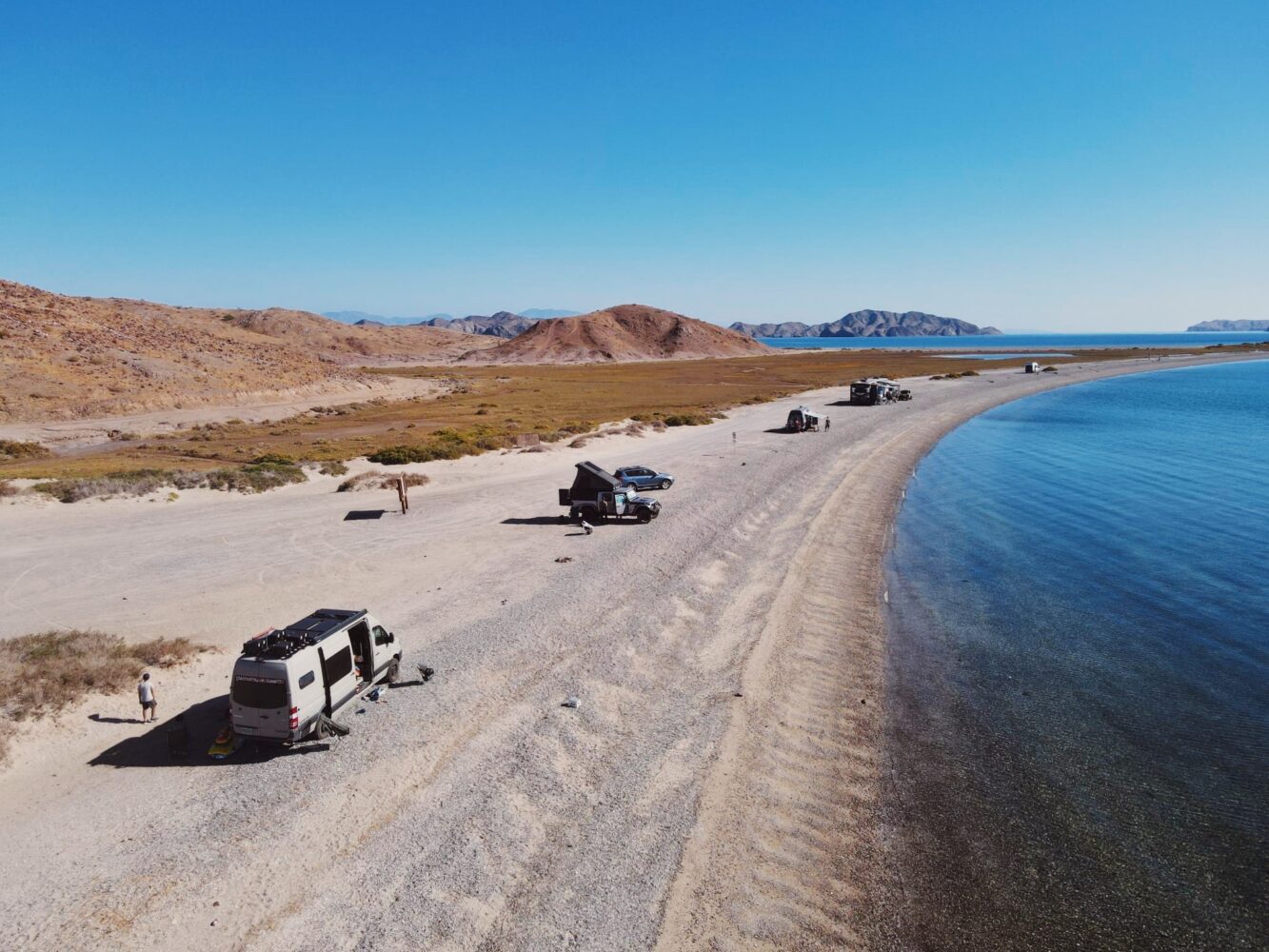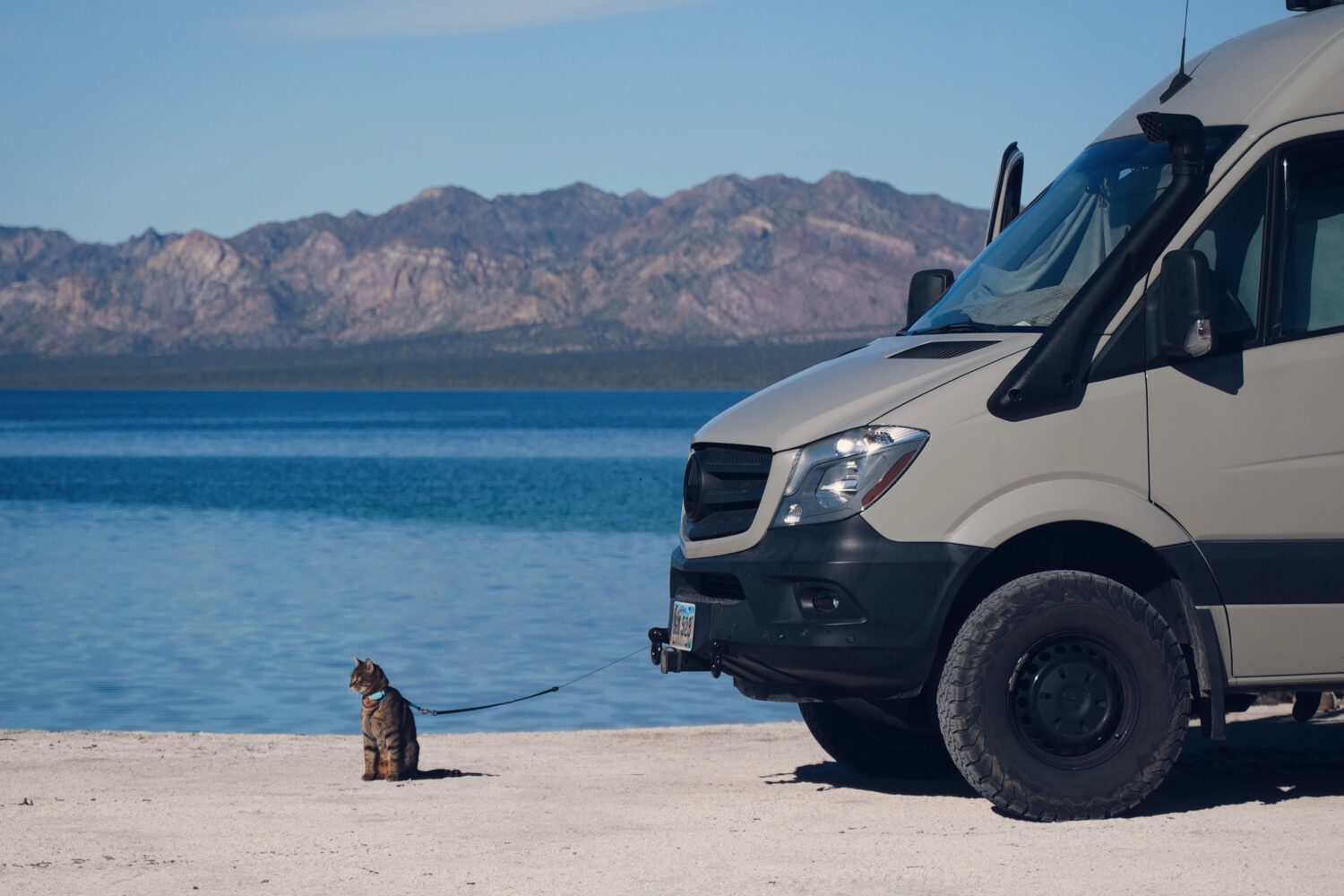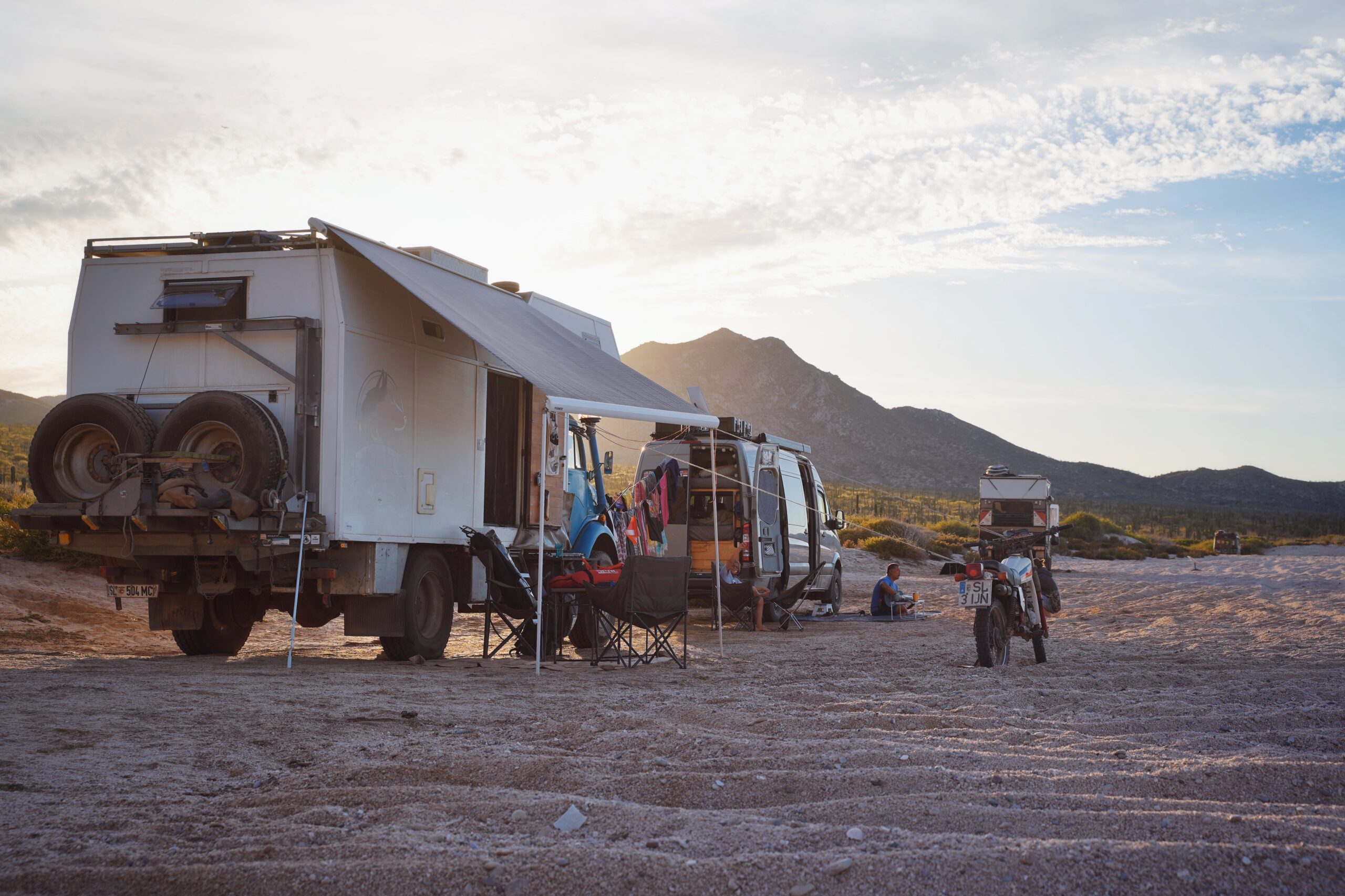By now, you have likely read about the most recent Baja tragedy involving two Australian brothers and their American friend who were found murdered just outside of Ensenada on a surf trip. The incident is deeply troubling, and our hearts go out to their families; we hope you will soon find solace in these difficult times. Although I wish it hadn’t happened, the truth is that incidents like this do occur to tourists, although statistically, they are exceedingly rare.
We have been traveling to Baja for well over 30 years, starting as Southern California college kids in the 1990s heading south of the border on spring breaks and surf trips. The feeling of uncertainty was always there, especially during those days without instant access to information and social media. But we felt more invincible in our younger days. However, with today’s technology, you can be well-informed before embarking on a trip like this. On the other hand, being fed too much information, especially in today’s hyperbolic, sensationalized formats, can certainly feel overwhelming.

Before we delve into more detail about my opinions on the dangers of Baja California, let’s first talk about some facts regarding crime statistics. By and large, based on reports from the United Nations Office on Drugs and Crime (UNODC), the Americas as a whole have the highest homicide rate compared to the rest of the world. This includes North and South America and all of the Caribbean islands. In 2021, 5.8 out of 100,000 people worldwide died due to intentional homicide. By comparison, the Americas as a whole have a rate nearly triple that, at 15. Zooming into specific countries in the Americas, the United States ranks close to the global average at 6.4, while Mexico skews about four times as high at 26.1.
Within Mexico, there are hotspots as well. Many of the states near the border tend to have higher rates due to illegal drug or human trafficking. Zooming in even closer, if we look at the Baja Peninsula, the state of Baja California, also known as Baja Norte, is one of the most dangerous places in the entire country. Especially in the last 10 years, the homicide rate has risen from 17.7 per 100,000 in 2012 to nearly quadrupling at 70.1 in eight short years. The regions near Tijuana and Ensenada account for the vast majority of these homicides, which is exactly where the murder of these three surfers took place. Baja California Sur, on the other hand, has seen a far smaller increase during that same period, rising from 5.0 in 2021 to just 7.1 in the same period.

So what does that mean for those of us who love spending time south of the border? Friends and social media followers have asked us about this recent incident. The truth is, we are not surprised. For the last few years since the pandemic, Baja California tourism has boomed. More people than ever are crossing the border by land to see what the hype is all about, and for good reason. Fueled by rising inflation costs in the US, lower prices across the border look ever so enticing. Combine that with the world-famous food, surf, warm winter weather, and fantastic hospitality, and it is hardly surprising. Countless influencers are flooding their social media accounts with posts of their toes deep in the sand with fistfuls of cervezas and fish tacos. Those once apprehensive about crossing the border might feel more emboldened than ever from a deep sense of FOMO. In the end, statistics will always win. More visitors are on the ground in Baja California, and with homicide numbers on the rise, more bad things can happen.
Everywhere we go is based on a series of calculated risks. Currently, we are sitting in an Airbnb in Cartagena, Colombia, as we await our vehicle’s arrival. Colombia was once the murder capital of the world during the 1990s when Pablo Escobar reigned supreme. It has fallen precipitously since but still ranks just below Mexico worldwide as of 2022 with its intentional homicide rates. Yes, we do take great care when we leave to explore outside. We do our best to get back to a safe place before dusk. And we make sure we are well aware of all the areas we are not supposed to be in. Whether in Colombia, Baja California, or anywhere else in the world, we follow a handful of rules to ensure our safety.

Things You Should Do
DO Travel with Other People
Strength in numbers is more true here than ever. When you are not in your home country and unfamiliar with the customs, you will stick out like a sore thumb. While most people are good and want to help, having a few more bodies along with you means bad-doers will think twice before striking.
DO Learn Some Basics of The Language
Getting some inside scoop on the area that you are in can be the difference between having the time of your life or losing your life. If you are not supposed to be somewhere, there is no one better to tell you than a local. Even if you don’t speak the language, technologies like Google Translate today make communicating easier than ever. Having been raised by Croatian parents, my wife, Marlene, often diffused tense situations through language during our time in the Balkans when we came across intriguing locals curious about our intentions.
DO Keep A Low Profile
Foreigners will always stand out simply by how you look, the car you drive, the language you speak, and everything else about you. Doing your best to keep a low profile is always a good idea. Don’t walk around with expensive gear in plain sight, such as phones, cameras, and computers. Avoid speaking loudly in languages foreign to locals. Conform to local customs when driving around cities. These are all ways to help you blend into your surroundings. It will not only keep you safer, but it can also give you a more authentic experience.
DO Pay For Camping
We know a lot of people in the United States take a lot of pride in never paying for camping. That is fine, and we often feel that way as well when we are home. But when we are away from places that we know very well, it is usually best to find a secure and safe place to stay even if it means you are paying to be there. Paying means someone local is there to look after you. Paying also means helping the local economy and travelers will be more welcome.
DO Read iOverlander Warnings
If you are using the iOverlander app, you can toggle on the warnings listings on the map, which will show you all the places where something bad might have occurred. These reports don’t mean that you will also experience the same thing, but they will give you an idea of what could happen. As they say, knowing is half the battle.
DO Subscribe To Government-Issued Alerts
Many countries issue alerts for their citizens who are traveling abroad. You usually subscribe to alerts from your government’s website based on where you are. I am not saying that you should follow all of their advice. But knowing what and why an area you might be visiting has an elevated alert will give you some idea of what to expect.

Things You Should NOT Do
DON’T Wild Camp At Unknown Locations
Although it’s an unpopular opinion in the overlander crowd, hear me out. Many violent crimes start with someone ending up at places they are not supposed to be. Baja California is a wild and beautiful place, but there are practically no undiscovered places. If it isn’t already known as a place to camp, there is probably a reason why. Your prowess in discovering amazing boondocking gems in your home country, where you understand the rules, doesn’t usually translate well in new-to-you lands with different laws and regulations. If you must, find and speak to locals before adventuring into the unknown.
DON’T Leave Your Possessions Unattended
While it is generally safe to leave tables, chairs, and the like out at camp overnight in the US, things like that tend to disappear in Mexico. We learned this the hard way starting in the early ’90s when our cooler and camp stove walked away while sleeping at Playa San Miguel. It also attracts people with nefarious intentions that can further harm you and your property.
DON’T Assume You Are Alone
Even if you are seemingly in the middle of nowhere, I can assure you that someone saw where you were going and they are well aware of where you are. That can be a good thing but it certainly can also be bad if those people have reasons not wanting others to be there. While in Morocco, regardless of how remote we thought we were, someone always seemed to walk by. We were above 11,000 feet in the High Atlas Mountains dozens of miles down a dirt road, and a shepherd appeared out of nowhere. Fortunately, he was just minding his own business. And he may have been just as concerned about us as we were of him. Interactions like this have occurred in Greece, Norway, Ireland, and several other places where we thought we were all alone.
DON’T Lose Communications With Others
Whether you have cell coverage, walkie-talkies, or can afford satellite communications such as Garmin inReach or Starlink, having a way to stay connected is critical. If things do turn for the worse, being able to signal for help quickly can make all the difference.
DON’T Drive At Night
We always follow this rule regardless of where we are when traveling internationally. There have only been a handful of times when we were forced to make our way to our destination in the dark, and usually, it is because we had no choice. There are plenty of reasons not to drive at night, but in Baja California, these two stand out: Wildlife tends to come to the roadways to sleep on the warm asphalt at night. And darkness is the best cover if there is anyone who wishes to do you harm.
DON’T Overreact To Warnings and Alerts
It might seem counterintuitive to the above tip about subscribing to warnings and alerts, but being able to evaluate them for your situation is also extremely important. Often, the warnings and alerts don’t apply to everyone, and if you blindly follow every single one, you will probably never leave your home.

Extra Tips Specific to Baja California
We religiously follow the above tips when visiting any foreign country. Especially in Latin America. However, here are a couple of specific Baja-related tips that you might find helpful for your next overland trip across the border.
Leave the Areas Near the US Border After Crossing
While the cities of Tijuana, Ensenada, and Mexicali have some great places to visit, the regions near the US border tend to carry a higher level of risk. Plan your border crossings earlier in the day, have a place in mind, and try to get there before dusk so you can safely spend your first night in Mexico.
The Sea of Cortez Side Is Safer than the Pacific Side in Northern Baja
We have spent a lot of time and made some wonderful memories around the Ensenada/Rosarito area back in the 1990s and 2000s. But the reality is that times are different now. Unless you have to be on the Pacific side to surf or visit specific locations, the areas around San Felipe are generally safer than the bigger cities on the other side.
Of course, nothing can guarantee that you will always be 100 percent safe. Not even if you choose to stay home. These basic rules are not meant to scare anyone away from getting out there to see the world, but I suspect it will give some people a little pause. That is intentional. Diligence is something we all should abide by as complacency can be deadly. The world is out there for us to experience but our safety and security should be taken seriously.
Read more: Join Expedition Portal to Support Acalanes High School Body Shop’s Baja Adventure
Images: Daniel Lin
Our No Compromise Clause: We do not accept advertorial content or allow advertising to influence our coverage, and our contributors are guaranteed editorial independence. Overland International may earn a small commission from affiliate links included in this article. We appreciate your support.


